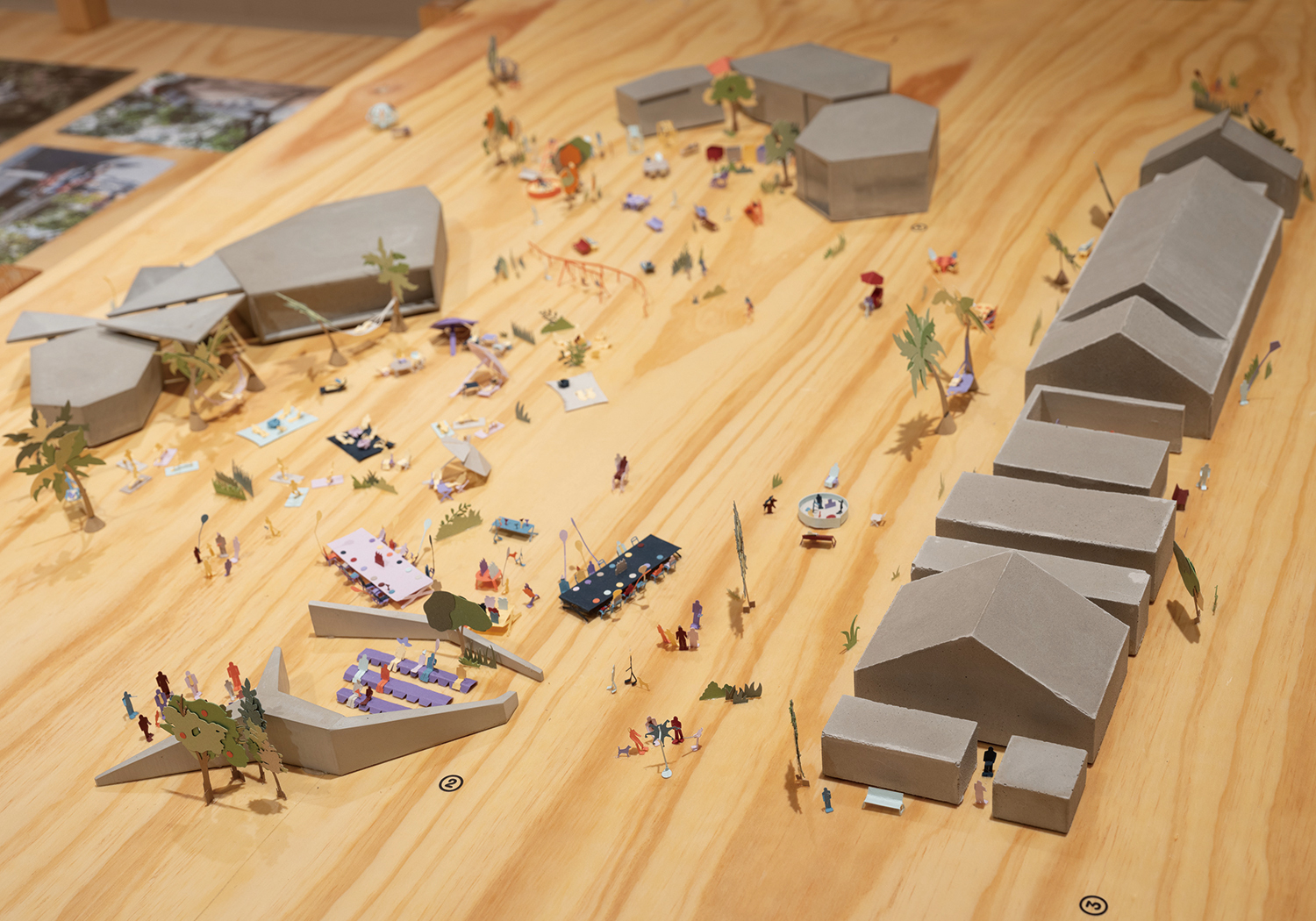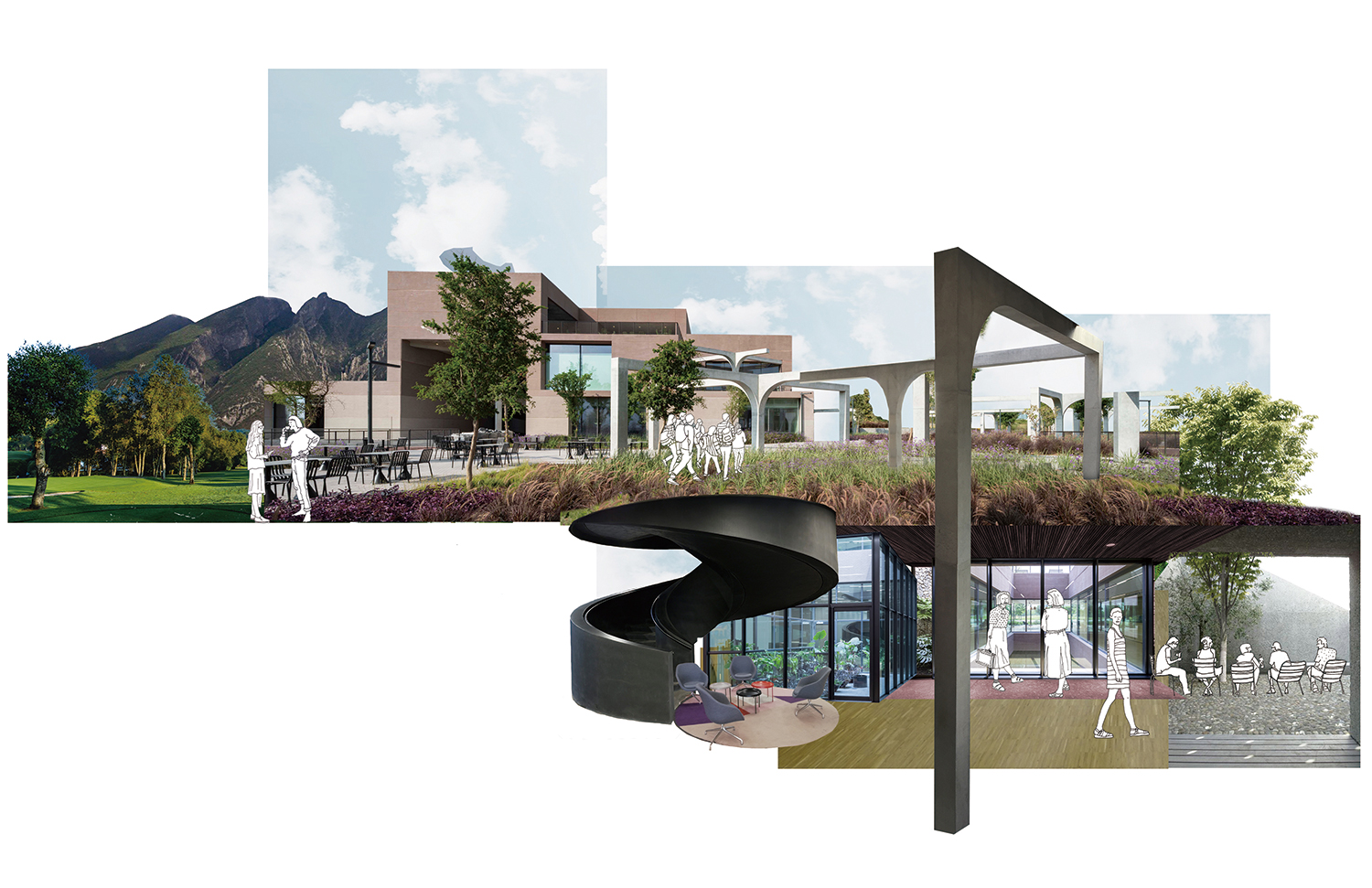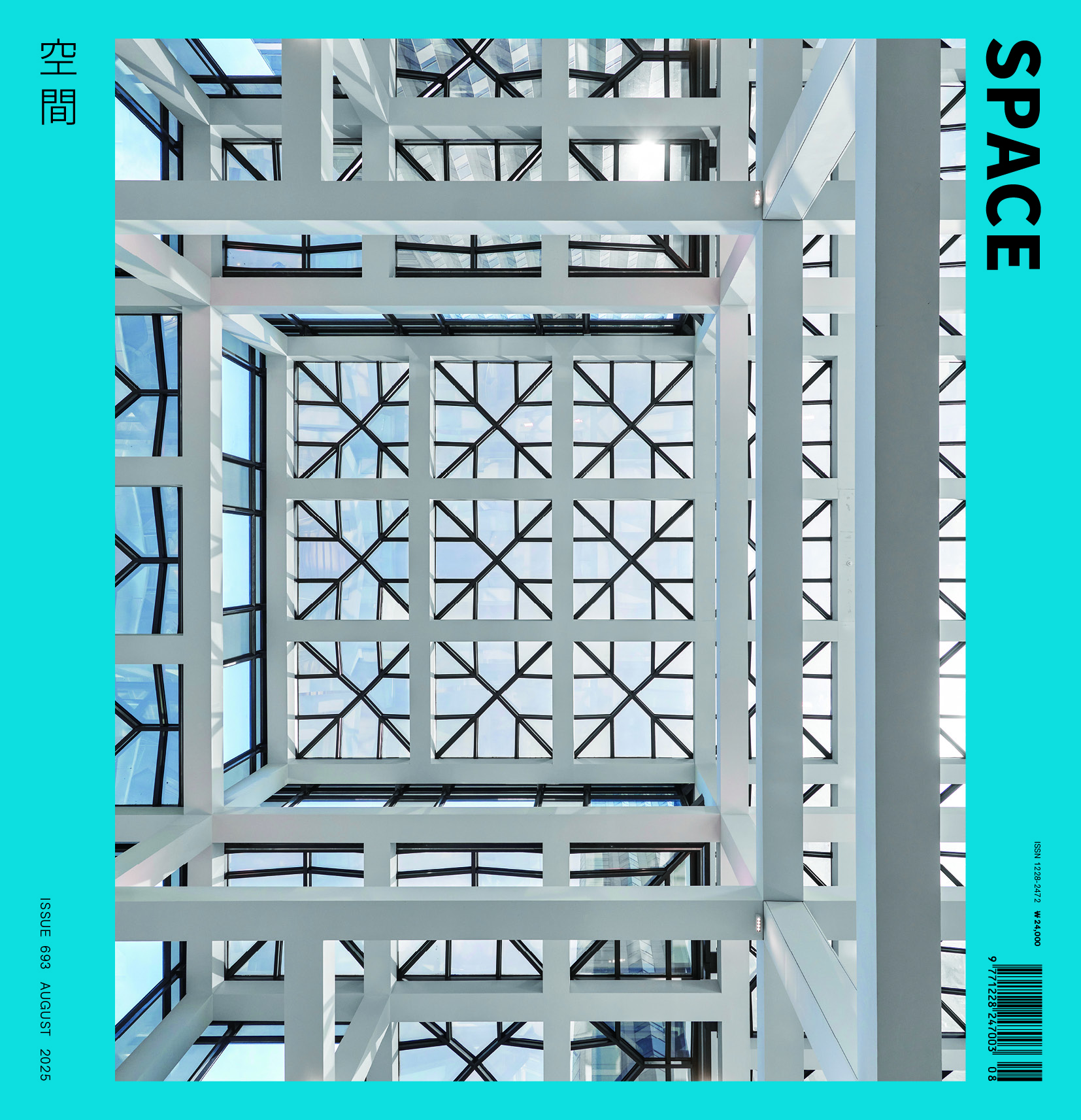SPACE August 2025 (No. 693)

Exhibition view of ‘Tatiana Bilbao Estudio: A City of Rooms’ ©Zachary Riggleman

Collage image of Estoa–UDEM (2020) introduced at the exhibition ©Tatiana Bilbao Estudio
Tatiana Bilbao Estudio, founded in 2004 by Mexican architect Tatiana Bilbao, explores architecture as a platform that enriches human experience, grounded in human‑centred thinking. She argues that architecture must step beyond a fixed physical object and become a framework that enables change and interaction, fostering social exchange. Attentive to sustainability and community values, and implemented through appropriate technology, the studio’s work spans a wide spectrum—from small projects including social housing to large‑scale master plans. Bilbao’s focus is linked to her pre‑practice background: her thesis on the rehabilitation of the city after the 1985 earthquake and her service as an advisor in Mexico City’s Ministry of Development and Housing. Having observed transformations in social housing up close, she drew on research and practice to sharply criticise the Mexican government’s standardised housing policies – policies that she argues eroded community and local identity – in her book A House Is Not Just a House (2018).
In this exhibition Bilbao states, ‘Rooms in the contemporary house are hyper‑specialised instruments for containing domestic functions,’ and instead of asking what a house is, she asks why it has taken its present form. To that end she separates five constituent elements – living room, bedroom, kitchen, bathroom, and garden – into ‘rooms’, partitions the gallery accordingly, and links each space to major projects to interrogate their roles in reverse. This line of inquiry is crystallised in the form of questions posed by Raymund Ryan (curator, Heinz Architectural Center): ‘Where do we find rest? How do we share our meals? Can the spaces we inhabit daily help us better nurture one another? How might the design of a living room or a kitchen relate to – and empower – a broader sense of community?’
At first glance the works presented – Research Center of the Sea of Cortes (2023), Estoa–UDEM (2020), Santa Catarina Parish Church (2011 – ongoing), Culiacán Botanical Gardens (2004 – ongoing), and Olive West (2020) – may seem only loosely related to a house or its rooms. Yet, recalling Bilbao’s critical stance, we can read an intent to reveal how ‘rooms’, as activity zones rooted in daily life, aggregate into the social field we call the ‘city’. The studio believes that the intimacy of spaces of ‘domesticity and care’ expands into a relational network linking the individual and the city. Their inclusion of, for example, the role of a communal kitchen in a residential building in Mexico City or the coexistence of a dwelling and a small garden in St. Louis, Missouri serves this same purpose.
Meanwhile, the array of models, drawings, and collage works installed in the gallery constitutes another attraction of the exhibition. Bilbao has criticised computer-generated renderings as dampening creativity and has said she employs collage as a tool to transcend such limits—producing layered meanings and stirring the imagination. This exhibition foregrounds by-products derived from her process to redefine the meaning of care and home, offering a new perspective on how privacy and publicity might be balanced within society. In that sense, although the show at the Heinz Architectural Center of the Carnegie Museum of Art closed on June 15, the ‘questions’ Bilbao poses seem far from any expiration date.





